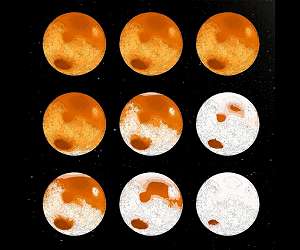As the goals of Mars exploration expand to include sample return, it becomes important to protect Earth from potential extraterrestrial sources of contamination. Likewise, it is important to avoid mistaking Earth life for indigenous life brought back from Mars.
In a new study, scientists examine the effects of desiccation and freezing on microbial ionizing radiation survivability on Mars. The study is published in the peer-reviewed journal Astrobiology. Click here to read the articles now.
Corresponding author Michael Daly, PhD, from the School of Medicine, Uniformed Services University of the Health Sciences, and colleagues sought to better understand the impact of the martian surface on microbial dormancy and survivability.
Mimicking the conditions on Mars, they tested the influence of desiccation and freezing on the ionizing radiation survival of six model microorganisms: vegetative cells of two bacteria, a strain of yeast, and vegetative cells and endospores of three Bacillus bacteria. The investigators found that desiccation and freezing increased radiation survival of vegetative microorganisms.
“We report that desiccated and frozen cells of the bacterium D. radiodurans can survive astonishing ionizing radiation,” stated the investigators, “exposures equivalent to hundreds of millions of years of background radiation on Mars.”
The investigators concluded that “if martian life ever existed, even if viable lifeforms are not now present on Mars, given that whole viable D. radiodurans cells can survive the equivalent of 280 million years in the frozen martian subsurface, then their macromolecules would survive much, much longer. This strengthens the probability that, if life ever evolved on Mars, this will be revealed in future missions.”
Astrobiology Editorial Board Member, John Rummel, noted that “the work put forward by Michael Daley and his colleagues represents a comprehensive look at the interactions between desiccation, freezing, and radiation survivability in one of our most tenacious microbes, Deinococcus radiodurans.
“The potential for D. radiodurans or other Earth microbes to survive present-day conditions on Mars draws attention to the need for a complex analysis regarding the very real possibility of Earth microbes contaminating specific landing sites on Mars, and even some of them-as qualified martian survivors-showing up in our studies after a ride home to Earth in a sample returned from Mars.”
Research Report:Effects of Desiccation and Freezing on Microbial Ionizing Radiation Survivability: Considerations for Mars Sample Return
Related Links
USU School of Medicine
Mars News and Information at MarsDaily.com
Lunar Dreams and more
|
We need your help. The SpaceDaily news network continues to grow but revenues have never been harder to maintain. With the rise of Ad Blockers, and Facebook – our traditional revenue sources via quality network advertising continues to decline. And unlike so many other news sites, we don’t have a paywall – with those annoying usernames and passwords. Our news coverage takes time and effort to publish 365 days a year. If you find our news sites informative and useful then please consider becoming a regular supporter or for now make a one off contribution. |
||
|
SpaceDaily Contributor $5 Billed Once credit card or paypal |
SpaceDaily Monthly Supporter $5 Billed Monthly paypal only |
|

![]()
Life may have thrived on early Mars, until it drove climate change that caused its demise
Tucson AZ (SPX) Oct 19, 2022
If there ever was life on Mars – and that’s a huge “if” – conditions during the planet’s infancy most likely would have supported it, according to a study led by University of Arizona researchers. Dry and extremely cold, with a tenuous atmosphere, today’s Mars is extremely unlikely to sustain any form of life at the surface. But 4 billion years ago, Earth’s smaller, red neighbor may have been much more hospitable, according to the study, which is published in Nature Astronomy.
Most Mars experts ag … read more